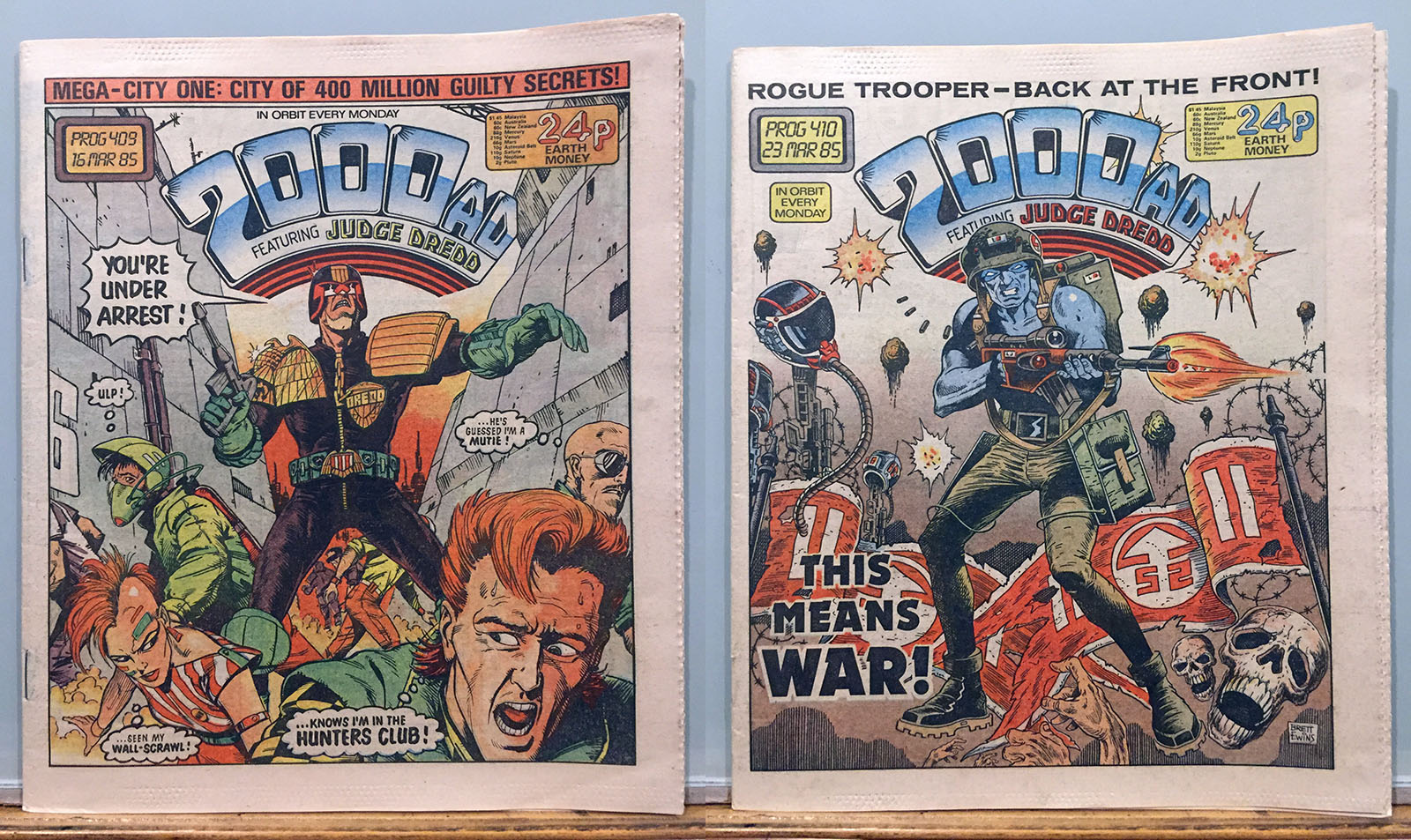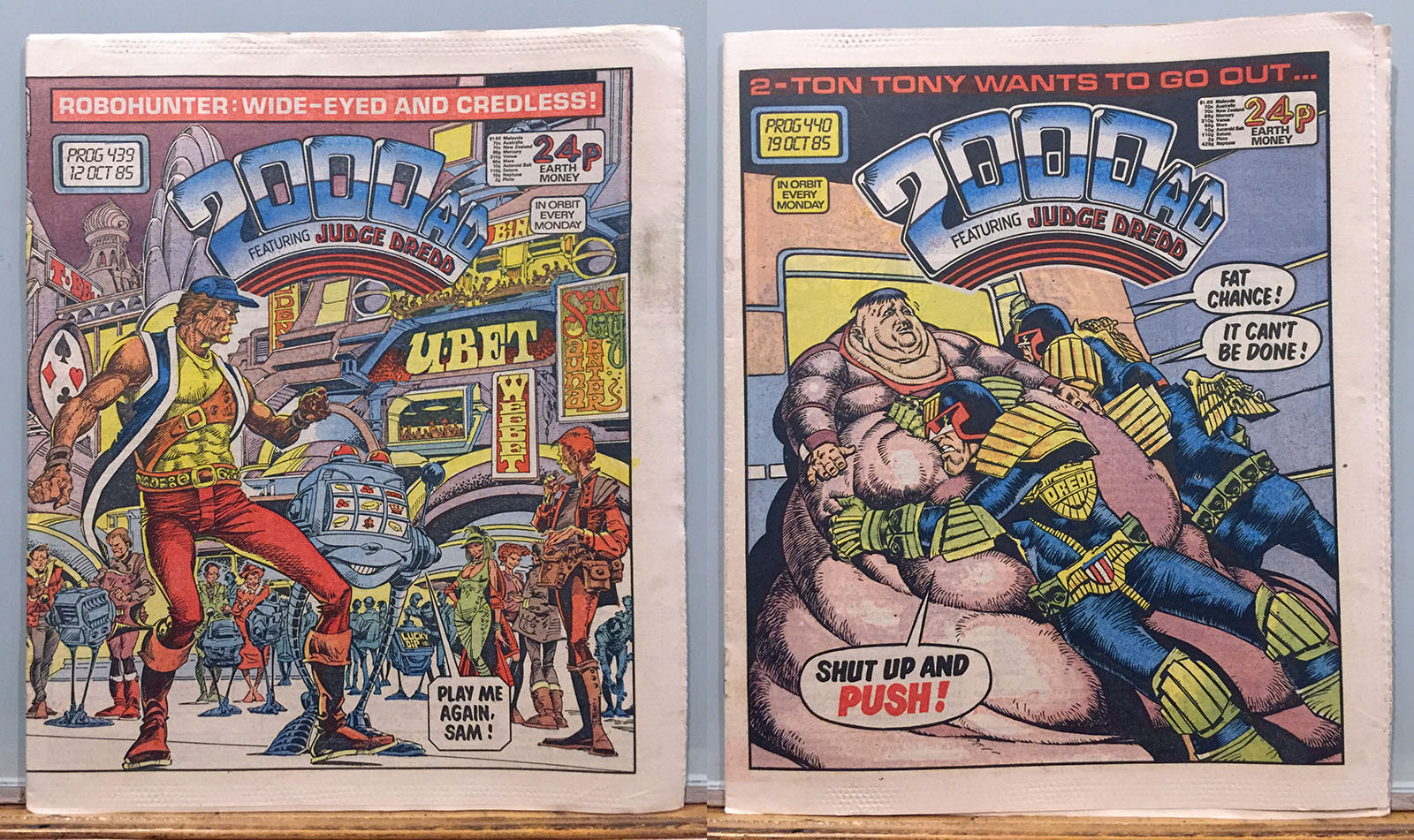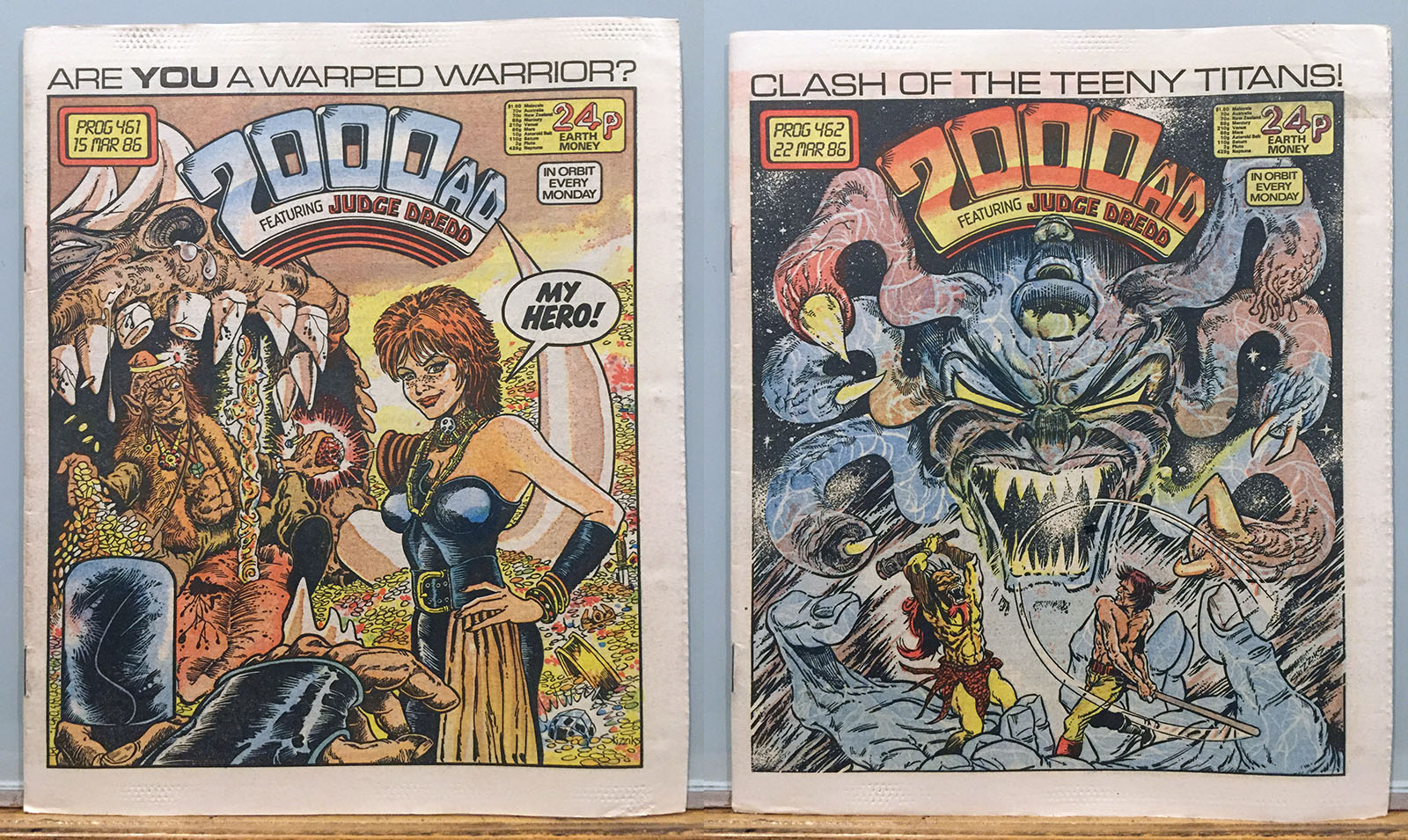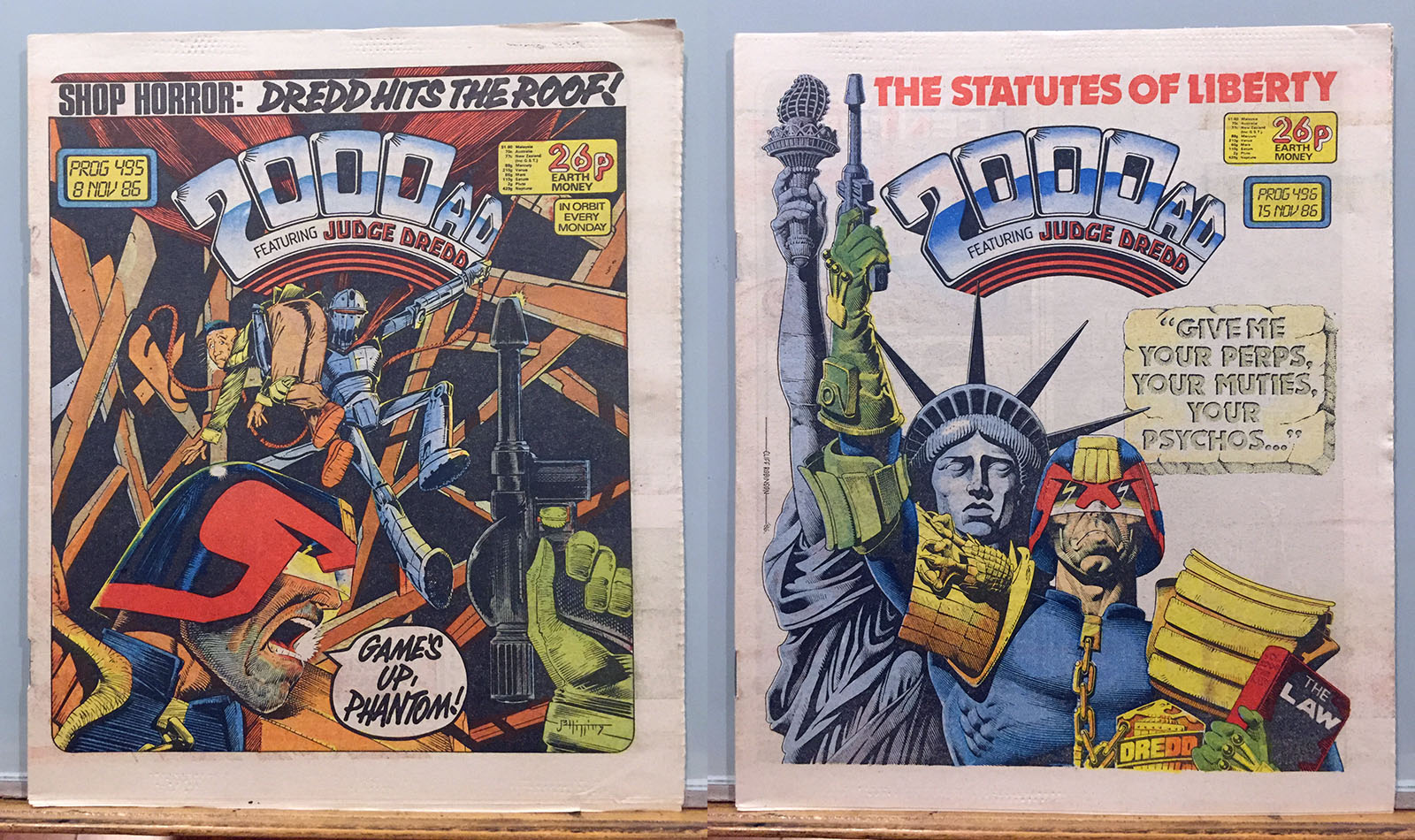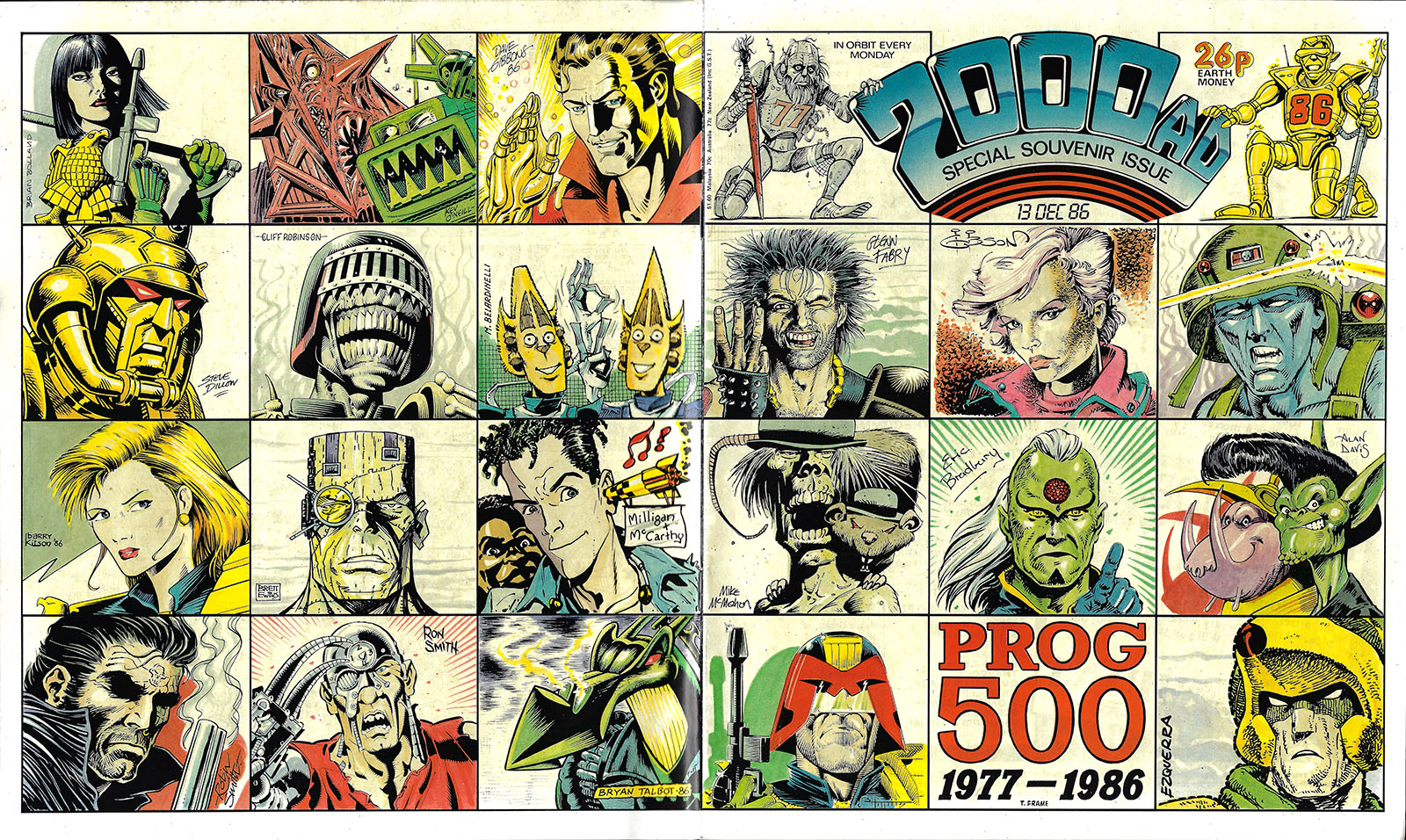2000AD Progs 401-500
If this batch had a theme, it would have to be “transition.” All the most popular characters were still in residence; Judge Dredd dominated every issue, but Robo-Hunter, Rogue Trooper, Strontium Dog, Nemesis, Slaine, and others were in regular rotation and always knocking it out of the park with great stories and fantastic art. New ideas came and went. Judge Anderson Psi Division became the second Dredd spinoff, giving his favorite supporting character her own series and proving the point that readers were happy to see more of that world.
The “transition” part was fueled by outside factors that made 2000AD a victim of its own success; now that it had proven itself, DC Comics came knocking at the door to lure away some of its core creatives to more lucrative assignments in America. Brian Bolland, Mike McMahon, Alan Moore, Dave Gibbons, and others were happy to take them up on it. This left some friction in their wake when the publisher IPC was forced to grapple with issues of fair pay and creator rights in order to stop the outflow. Head writer Pat Mills describes it in detail in his tell-all book, which can be found on Audible here. (Highly recommended!)
As the cover price rose from 22p to 26p, new writers and artists stepped in to keep the gears turning. The most prominent among them was the astounding Glenn Fabry, who debuted on Slaine and instantly caught fire. He would be the next to accept work from DC. Then there was Cliff Robinson, who so closely aped Brian Bolland’s art style it invited controversy. But he’s still working on 2000AD today, so he managed to draw his way out of trouble.
On the other hand, core-team workhorses like John Wagner, Pat Mills, Ian Gibson, Ron Smith, Cam Kennedy, and Carlos Ezquerra were still in it for the long haul to prevent the comic from losing its original DNA. There was even an odd example of reverse importation when a 1986 color DC graphic novel titled Metalzoic (by Pat Mills and Kevin O’Neill) got serialized here in black & white.
Then there was the “Mega-Plan.” It had been announced in late 1984 for release in early 1985. All we were told was that it was going to be big. Something never seen before. You’ll find out what it was as soon as you start scrolling.
Classic Brian Bolland cover
The “Mega Plan” was revealed in prog 403: an honest-to-Grud EP single about Judge Dredd created by two members of pop group Madness. Somehow I learned that an indie record shop in Chicago (called Wax Trax) had it in stock, and I actually found it there while I was in town for an SF convention in early ’85. It’s pretty wacky, but I loved it.
These days, of course, you can find it on Youtube:
Side A: Mutants in Mega-City One | Side B: Mutant Blues | Single edit | Music video
Alan Moore’s Halo Jones Act II begins
First Glenn Fabry cover
First Cliff Robinson cover
Anderson Psi Division spinoff series starts
Return of fan-favorite character Chopper in Judge Dredd
Start of adventure game based on Slaine
Writer Alan Moore and artist Ian Gibson win the
Eagle Award for favourite character, Halo Jones.
2000AD wins for favourite comic (again).
Premiere of Metalzoic by Mills & O’Neill
Prog 500 was a milestone in every respect. First, just look at that number. Second, the page format was slightly smaller for this issue only, and just about every favorite artist contributed a square to the jam cover (which was printed on slick paper as a keepsake). It also featured the debut of a new series called Bad Company that would become another major hit.
Most interesting, though, was a 5-page satirical story at the end of the prog called Tharg’s Head Revisited. It was also a jam project by core writers and artists that lampooned just about every character, including alien EIC Tharg himself, and contained some rather biting commentary on office politics. Read it for yourself and you’ll easily detect a fair amount of friction between the lines. Suffice to say, not all the jokes were appreciated by their targets. But 2000AD was a rebel publication from the very beginning. Inevitably, it would rebel against itself.







